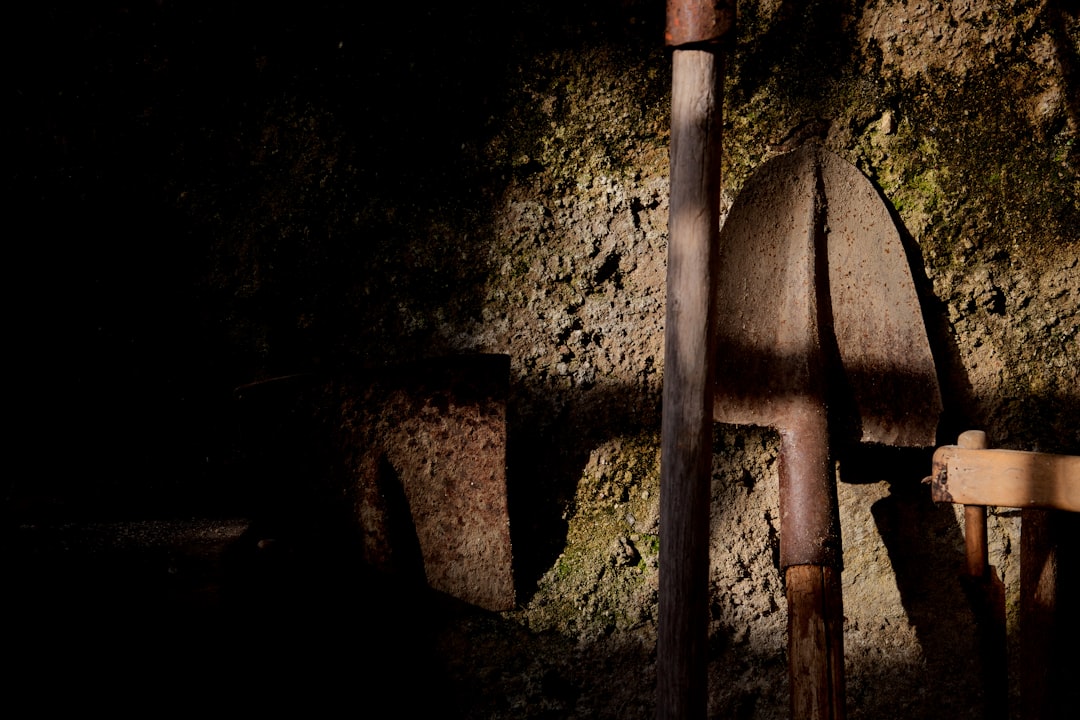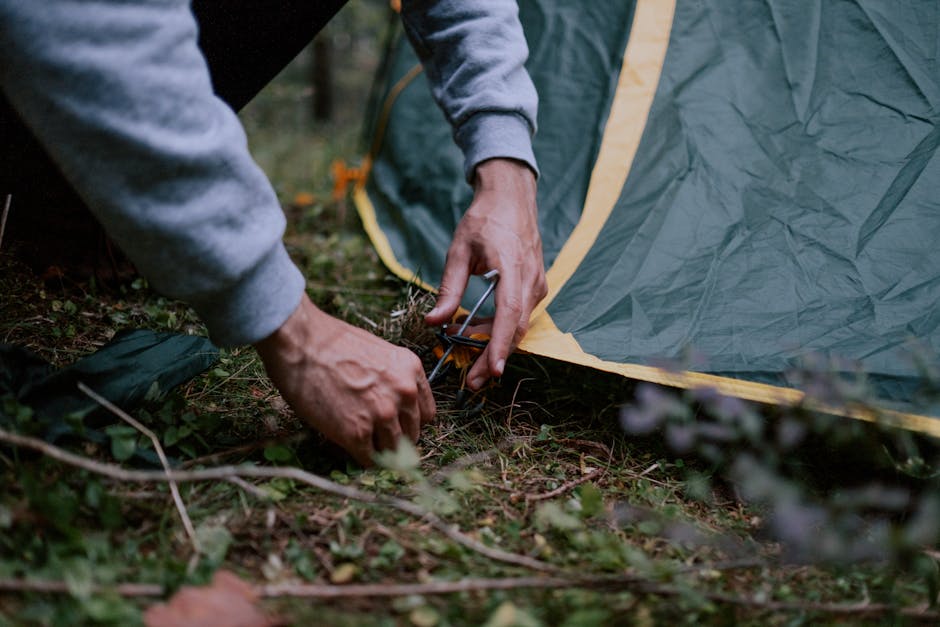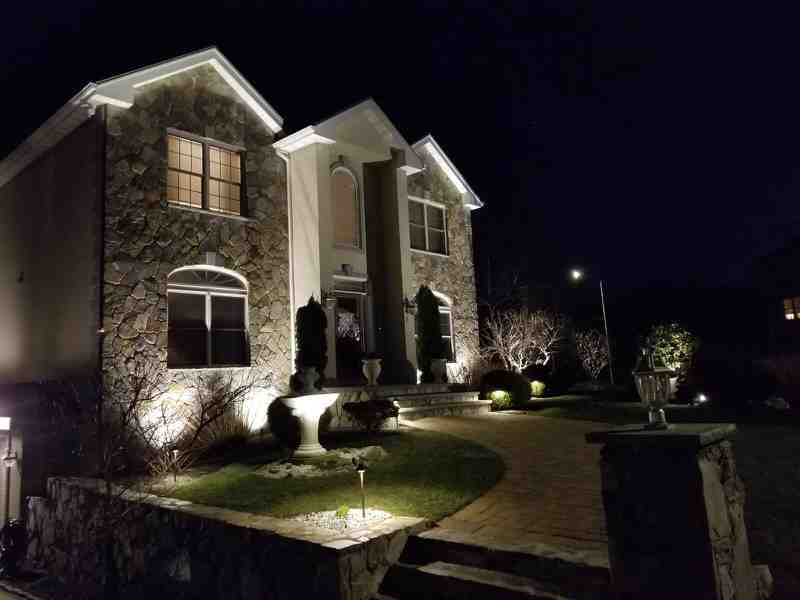Landscape Lighting Installation: Top 5 Essential Tips for 2024
Introduction
Discover the elegance and security that comes with a well-installed landscape lighting system. Enhancing your property with landscape lighting is not only about the aesthetics; it significantly boosts safety and increases your home’s value. From the serene ambiance of softly lit pathways to the dramatic highlight on architectural details of your home, lighting transforms the outdoors after sunset into a welcoming and secured haven.
Landscape lighting installation involves various steps — from planning and fixture selection to wiring and final testing. While it might seem daunting, the process can bring immense satisfaction and a profound change in how you view and enjoy your outdoor space.
Primary benefits of a thoughtfully executed landscape lighting setup include:
– Enhanced Curb Appeal: Illuminate your home’s best features and make it stand out in the neighborhood.
– Increased Safety and Security: Well-lit pathways and entryways deter potential intruders and reduce the risk of tripping accidents.
– Extended Outdoor Living Space: Enjoy more of your yard after dark, whether for entertainment or relaxation.
Landscape lighting is a functional addition that beautifies your environment and ensures it is usable any time, day or night. With careful planning, the right tools, and understanding your landscape’s specific needs, you, too, can achieve a beautifully lit outdoor space that is both enchanting and practical.
Planning Your Landscape Lighting Installation
When embarking on a landscape lighting installation project, the key to success lies in meticulous planning and thoughtful design. This section will guide you through designing, laying out, planning, and mapping your landscape lighting to ensure optimal functionality and aesthetic appeal.
Design: Visualizing Your Space
Start by visualizing your outdoor space at night. Consider which features you want to highlight, such as trees, architectural details, or water features. Think about the mood you want to set; soft lighting for a relaxing retreat, or bright lights for security and visibility.
Tip: Use a flashlight at night to simulate how different lighting styles and positions affect the appearance of your outdoor space.
Layout: Positioning Your Lights
Map out where each light should go. This includes deciding on the spacing between lights, especially for pathway lights where consistent illumination is crucial. Placing lights too far apart might create uneven lighting that can lead to dark spots.
Tip: Keep pathway lights no more than 6-inches from the edge to ensure the path is well illuminated.
Planning: Choosing the Right Fixtures
Select fixtures based on the type of lighting you need:
– Spotlights for highlighting features.
– Path lights for walkways.
– Floodlights for large areas.
Consider using solar lights for areas that receive plenty of sunlight, as they require no wiring and are easy to install.
Mapping: Marking the Installation Sites
Before any digging occurs, use flags or marking paint to outline where each light will go. This visual representation helps you adjust the layout before installation begins, saving time and effort once you start digging.
Safety Tip: Always call 811 before you dig to check for underground utilities.
By following these steps in planning your landscape lighting installation, you’ll create a well-lit outdoor space that enhances both the beauty and functionality of your home. Next, we’ll explore how to choose the right lights for your landscape to ensure every feature is perfectly illuminated.
Choosing the Right Lights for Your Landscape
Choosing the right type of lighting for your landscape is crucial for both aesthetics and functionality. Here’s a breakdown of the different types of lights and their best uses:
Types of Lights
- Solar Lights: These are powered by sunlight and require no wiring, making them the easiest to install. They’re perfect for areas that get plenty of direct sunlight. However, their light output might not be as strong as other options.
- Low-Voltage Lights: These lights are energy-efficient and safe to install, as they operate on lower power. They need a transformer to convert home power to a lower voltage, but this setup allows for brighter illumination than solar options.
- Spotlights: Ideal for highlighting specific features such as trees or architectural details. They create a focused beam of light that draws attention to the spot it illuminates.
- Floodlights: These are used to light up larger areas with a wide beam, making them perfect for driveways or backyards where broader light coverage is needed.
- Path Lighting: These are small posts or fixtures placed along a path to illuminate walkways, making them safer and adding a decorative touch.
Choosing Between Solar and Low-Voltage
- Solar lights are best for areas without easy access to electrical outlets and where less intense light is acceptable. They are also environmentally friendly as they use renewable energy.
- Low-voltage lighting is more reliable for consistent, bright light and can be used in various settings, including wet areas, as they are safe and reduce the risk of electrical hazards.
Spotlights vs. Floodlights
- Use spotlights when you want to focus on a specific garden feature or an architectural detail of your home. They are directional and can create dramatic effects by casting shadows or lighting up a focal point.
- Floodlights offer a wider beam, making them suitable for general area lighting or for security purposes where you want to discourage intruders by brightly lighting up a large space.
Why Path Lighting?
Path lighting not only enhances safety by illuminating walkways but also adds a charming visual element to your garden. They can define a path, highlight border areas, and create a welcoming ambiance.
Selecting the Right Light for Each Area
When planning your landscape lighting installation, consider the function and the desired aesthetic. For example, softer, warmer lights are usually preferred for relaxing areas like a patio or a deck, while brighter lights might be needed for a driveway or entrance.
By carefully selecting the right type of lighting, you can enhance the beauty of your landscape while also addressing functional needs such as safety and security. The goal is to complement your space without overwhelming it. Next, we’ll delve into the basics of installing these lights to ensure you get the most out of your outdoor lighting.
Installation Basics for Landscape Lighting
Installing landscape lighting can transform your outdoor space into a beautifully illuminated haven. However, doing it yourself requires some preparation and understanding of basic safety and tool usage. Here are some essential tips and the tools you will need to get started.
DIY Tips for Successful Installation
- Plan Ahead: Before you start digging or installing, have a clear plan of where each light will go. This prevents errors and ensures that the entire system will work as intended.
- Test As You Go: After installing each light, test it to ensure it works before moving on to the next. This step saves time troubleshooting at the end.
- Leave Some Slack: When laying out your wiring, allow a little extra slack at each light fixture to give you flexibility if you need to adjust positions later.
Safety First
- Call Before You Dig: Always contact your local utility companies to mark any underground lines before you start digging. In the U.S., you can call 811 for this service.
- Handle Electrical Components Safely: Even though low voltage lighting is safer and less risky than line voltage systems, always handle electrical components with care to avoid short circuits or damage.
- Waterproof Connections: Ensure all connections are waterproof to prevent moisture from causing electrical faults. Using waterproof connectors and covering exposed wiring with conduit or protective sheathing is advisable.
Essential Tools Required
To install your landscape lighting, you’ll need a few basic tools. Here’s what should be in your toolkit:
– Wire Stripper: Essential for preparing wires to connect to the transformer and light fixtures.
– Shovel or Trenching Tool: Used for digging trenches where you will lay the electrical cables.
– Stake Installer: If your lights come with ground stakes, a stake installer can make it easier to get them into the ground without damage.
Using the right tools and following these tips will help ensure that your landscape lighting installation is successful and safe. Not only will this enhance the aesthetic appeal of your property, but it will also increase its functionality and safety during the night. Moving forward, let’s look at the detailed steps to install the lighting system effectively.
Step-by-Step Guide to Installing Landscape Lighting
Installing landscape lighting can transform your outdoor space, making it both beautiful and functional after sunset. Here’s a straightforward guide to help you through the process, from preparation to the final adjustments.
Marking Utilities
Before you start digging or driving stakes into the ground, it’s crucial to identify and mark all underground utilities. This step prevents damage to hidden lines such as gas, water, or electrical cables. Call your local utility companies or a utility marking service to do this for you. This service is usually free and ensures safety and compliance with local regulations.
Assembling Fixtures
Once the area is safe for digging, unpack and assemble your lighting fixtures. This typically involves:
– Attaching any necessary mounts or stakes.
– Installing bulbs if they aren’t pre-installed.
– Ensuring all fittings are secure.
Refer to the manufacturer’s instructions for specific assembly details for each type of fixture.
Mounting Techniques
There are several ways to mount your lights, depending on the type of fixture and where you want to place them:
– Stake Mounting: Directly insert the stakes attached to the fixtures into the ground. This method is common for pathway lights and small spotlights.
– Surface Mounting: Use this for fixtures that need to be attached to a hard surface like a deck or a wall. It typically requires screws and a power drill.
– In-ground Mounting: Ideal for larger lights that need more stability. This method may require a shovel or a post hole digger to create a suitable opening in the ground.
Wiring
Plan the route for your electrical cables, ensuring they connect each light fixture to the power source, which is usually a transformer. Use a trenching tool or a shovel to bury the cables at least 6 inches deep to protect them from being disturbed or damaged.
Transformer Setup
The transformer reduces high voltage to a safer, low voltage for your landscape lights. When installing the transformer:
– Mount it near a power source but at least 1 foot away from other structures and 30 feet from water sources to avoid electrical hazards.
– Ensure it’s mounted on a surface that can handle heat dissipation.
Connecting System
Connect each light fixture to the main power cable. This can be done using different connectors like twist-on connectors or clamp-style connectors that provide a secure and moisture-resistant connection. Make sure the polarity matches if required.
Testing
Once all connections are made, test your system by turning on the transformer. Check each light fixture to ensure it’s working correctly. If a fixture isn’t lighting up, double-check the connections and replace any defective bulbs.
Adjustments
After testing during the daytime, make final adjustments at night:
– Aim each light to highlight landscape features effectively without causing light pollution or glare.
– Adjust the position or angle as needed to achieve the desired lighting effect.
By following these steps, your landscape lighting installation will not only be functional but will also enhance the beauty of your outdoor space. Make sure to periodically check and maintain the system to ensure long-lasting performance. Up next, let’s look at some common questions homeowners have about installing landscape lighting.
Frequently Asked Questions about Landscape Lighting Installation
What is the average cost of installing outdoor lighting?
The cost of installing landscape lighting can vary widely depending on the type of lighting, the number of fixtures, and the complexity of the installation. Generally, for a basic setup using low-voltage lighting, homeowners might expect to spend anywhere from $1,000 to $3,000. This includes the cost of materials like transformers, lights, and wiring, as well as labor if you choose professional installation. For more elaborate systems or high-end fixtures, costs can be significantly higher.
Does landscape lighting wire need to be buried?
Yes, burying the wire is a standard practice in landscape lighting installation. This not only protects the wire from damage and wear but also keeps your garden looking neat and prevents any tripping hazards. The wire used in low-voltage landscape lighting is typically sturdy enough to withstand underground conditions but should be buried to ensure longevity and safety.
How deep to dig for landscape lighting?
For most residential landscape lighting installations, the wire should be buried at a depth of about 6 inches. This depth is sufficient to protect the wire from being disturbed by normal gardening activities while keeping it shallow enough to make future repairs manageable. When burying the wire, it’s crucial to use a flat blade shovel or a trenching tool to create a narrow trench, then gently place the wire in before covering it back up with soil.
By addressing these common questions, you can better prepare for your landscape lighting installation project. For specific concerns or complex setups, consulting with professionals like those at P.J. Pappas Company can provide tailored advice and skilled installation services. Moving forward, let’s explore some maintenance tips to keep your lighting in top condition.
Conclusion
After successfully installing your landscape lighting, maintaining its beauty and functionality is crucial. Here, we’ll provide you with essential maintenance tips, illustrate how proper lighting can enhance your home’s curb appeal, and highlight the specialized services offered by P.J. Pappas Company.
Maintenance Tips
Maintaining your landscape lighting is simpler than you might think and ensures that your outdoor areas remain inviting and well-lit year-round.
- Regular Cleaning: Keep fixtures free of dirt and debris to prevent overheating and reduce light obstruction.
- Inspect Regularly: Check for exposed wires, loose fixtures, or burnt-out bulbs every few months. This proactive approach prevents larger issues.
- Adjust for Growth: As your landscape matures, adjust the positioning of lights to accommodate growing plants and trees.
- Winter Care: In colder climates, remove or cover delicate fixtures to protect them from harsh weather.
By following these straightforward steps, you can extend the lifespan of your lighting installation and minimize the need for repairs.
Enhancing Curb Appeal
Strategically placed landscape lighting not only ensures safety and security but also significantly enhances the aesthetic appeal of your home. Illuminating walkways, accentuating architectural features, and highlighting landscaping can transform your home’s appearance at night, creating a welcoming atmosphere and increasing its market value. Effective lighting serves as a visual extension of your home, inviting guests and offering a glimpse of the care you put into your property.
P.J. Pappas Company Specialization
At P.J. Pappas Company, we specialize in both the installation and maintenance of landscape lighting. With over 37 years of dedicated service, our expertise ensures that each project is tailored to meet individual needs, blending functionality with aesthetics. Our team uses only the highest quality materials and the latest technologies to deliver durable and beautiful lighting solutions.
Why Choose Us?
– Tailored Designs: We create lighting layouts that complement your home’s unique style and features.
– Quality Installation: Our skilled technicians ensure every light is perfectly positioned and securely installed.
– Ongoing Support: We offer maintenance services to keep your system optimal, helping you adjust or expand as your landscape evolves.
In conclusion, thoughtful landscape lighting installation can dramatically enhance your home’s nighttime ambiance and curb appeal. Maintaining your lighting system is key to its longevity and effectiveness. For those seeking professional guidance and high-quality installation, the P.J. Pappas Company stands ready to illuminate your space with precision and care.





